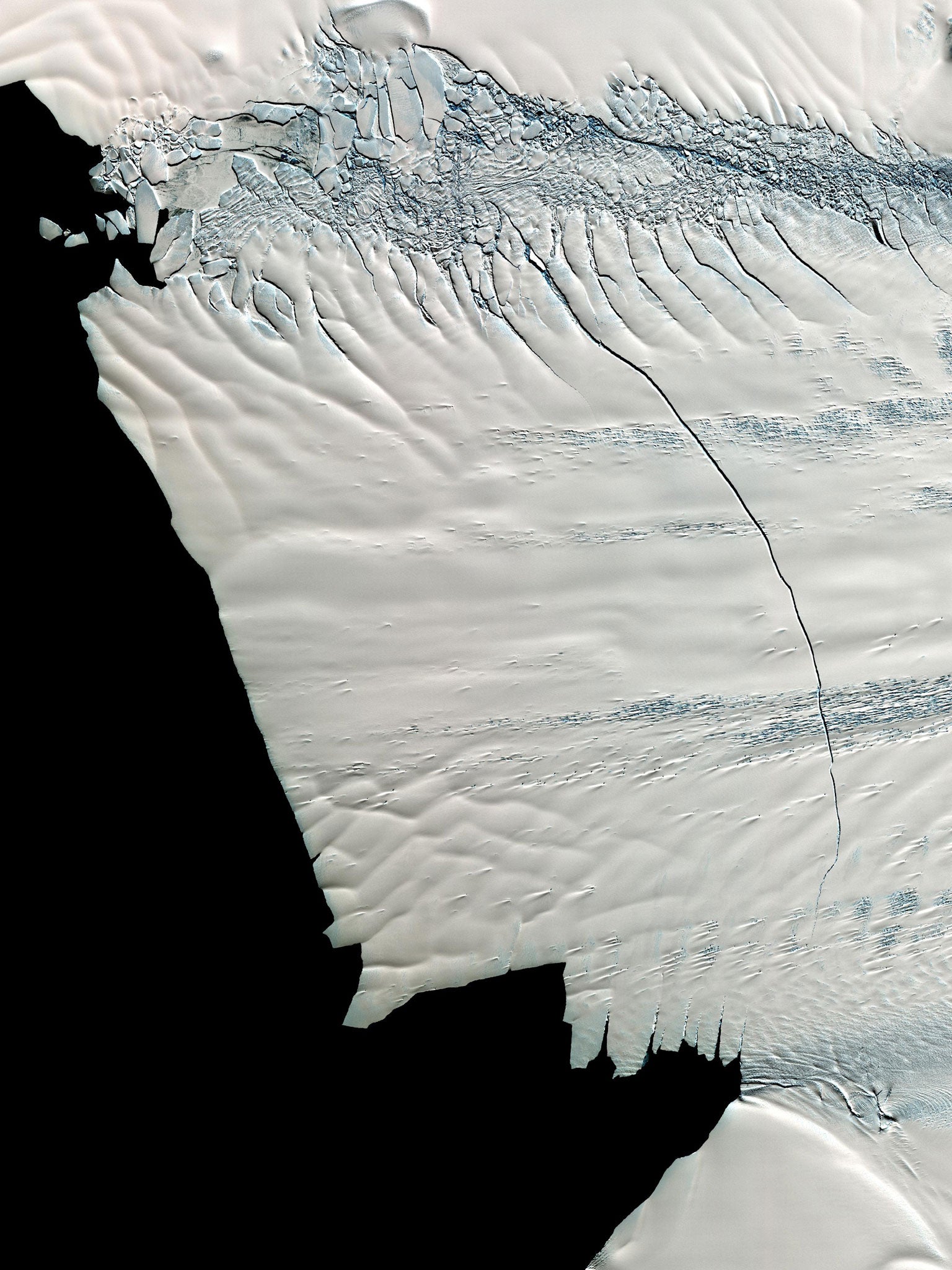Giant Antarctic iceberg ‘could pose hazard to international shipping lanes’, scientists warn
A team of British investigators have been given an emergency grant to track the Singapore-sized ice mass

A giant Antarctic iceberg has broken free of the continent and could be about to drift into busy international shipping lanes, a team of British scientists has warned.
The Government has awarded experts with an emergency grant of £50,000 to fund a six-month project in which they will try to track the progress of the ice and predict its movements.
The University of Sheffield’s Professor Grant Bigg, a leading authority on modelling the dynamics of icebergs, is heading up the investigation that will simulate the route to be taken by the 700 square kilometres (270 square miles) of ice – around eight times the size of Manhattan or the equivalent of Singapore.
The iceberg has broken away from the Pine Island Glacier (PIG), part of the Western Antarctic ice sheet.
Prof Bigg said the crack hadn’t been enough in itself to allow the berg to break away over winter because it had stayed “iced-in”.
“But in the last couple of days, it has begun to break away and now a kilometre or two of clear water has developed between it and the glacier,” he told BBC News.
“It often takes a while for bergs from this area to get out of Pine Island Bay but once they do that they can either go eastwards along the coast or they can… circle out into the main part of the Southern Ocean.”
If that happens, the scientist said, there could be a danger to ships. Prof Biggs said a previous iceberg in the area had been tracked going through the Drake Passage, a gap between Cape Horn at the bottom of South America and Antarctica’s South Shetland Islands.
This would take it into the path of one of the world’s busiest international shipping lanes, and trigger hazard warnings via a number of observation agencies.
A crack in the massive PIG ice sheet was first noticed by NASA scientists in October 2011. It was then only a partial fissure of around 80 metres (260 feet) wide.
Join our commenting forum
Join thought-provoking conversations, follow other Independent readers and see their replies
Comments
Bookmark popover
Removed from bookmarks